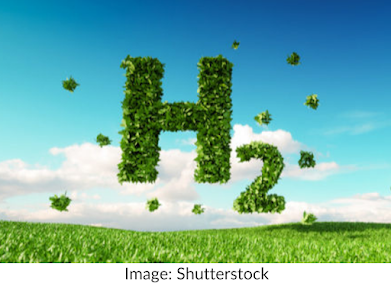Splitting Molecules To Store Energy
Collectively, the world has been relatively reluctant to make a switch to green energy solutions. Still, in recent years, solar energy has been emerging as a leading source of renewable energy. In a post from a few months back, I designed a photovoltaic (PV) solar panel system for my own home, and I found that these systems are comparatively much more expensive than traditional nonrenewable energy systems. This is true across the board, like in large commercial or industrial applications of the technology. Additionally, the immediate question that comes to mind about solar panels, how they store enough energy at night, has set back their widespread implementation. Surely if a technology that was both cost and energy-efficient were revealed, it would genuinely transform the world! I looked into an article from Stanford Engineering summarizing groundbreaking research on a process called photoelectrochemical (PEC) water splitting.
 |
| Image Credit: https://en.wikipedia.org/wiki/Water_splitting#/media/File:Electrolysis_of_Water.png |
This process would benefit the environment in many areas, such as potentially not emitting any greenhouse gasses (GHG). It has been known for years, but the challenge is scaling it up to be used in industrial settings. The Stanford engineers' research focused on this, growing the energy efficiency of PEC water splitting. According to the article, they "were able to capture and store 30 percent of the energy captured from sunlight into stored hydrogen, beating the prior record of 24.4 percent."
PEC water splitting involves utilizing sunlight energy to break water molecules down into their individual atoms of hydrogen and oxygen. The amount of energy produced and then stored from these bonds' breaking is a crucial factor. Catalysts used to facilitate this process have only been improving; the engineers at Stanford used new "water-splitting catalysts, in which electrons flow through the catalytic materials to break apart the stable H2O molecule." They allowed them to produce double the hydrogen and therefore have more energy stored.
 |
| Image Credit: https://onlinelibrary.wiley.com/doi/full/10.1002/adsu.201600035 |
The silicon solar cells making up standard PV panels drive their cost to be so high. PEC water splitting is also being developed in the form of a panel. The Stanford engineers used a new type of solar cell to achieve higher efficiency, called a triple junction cell, whose materials capture red, green, and blue light. Because the cells' materials can capture these different colors of light, their efficiency is much higher than the PV system, which only uses one junction. According to the article, the new cells "convert 39 percent of incoming solar energy into electricity, compared with roughly 20 percent for silicon-based, single-junction solar cells found on rooftops worldwide.
 |
| Image Credit: https://onlinelibrary.wiley.com/doi/10.1002/advs.201600337 |
Though the Stanford engineers' PEC water splitting process was highly effective, it required materials such as platinum that made it not viably scalable. However, cost-effective yet highly efficient materials and their placement are being closely researched to serve as catalysts for the process. Since Stanford's research in 2016, improvements to cost and efficiency have expanded. According to Shinshu University in Japan, in 2020, engineers have perfected catalysts "to engage in only desired reactions. This method made possible for the reaction to have no recombination losses." With such immense progress made by researchers in this area, the possibility that it will be scaled up and used in environmentally beneficial applications such as hydrogen-powered cars in the near future, is only improving.
https://www.energy.gov/eere/fuelcells/hydrogen-production-photoelectrochemical-water-splitting




Comments
Post a Comment